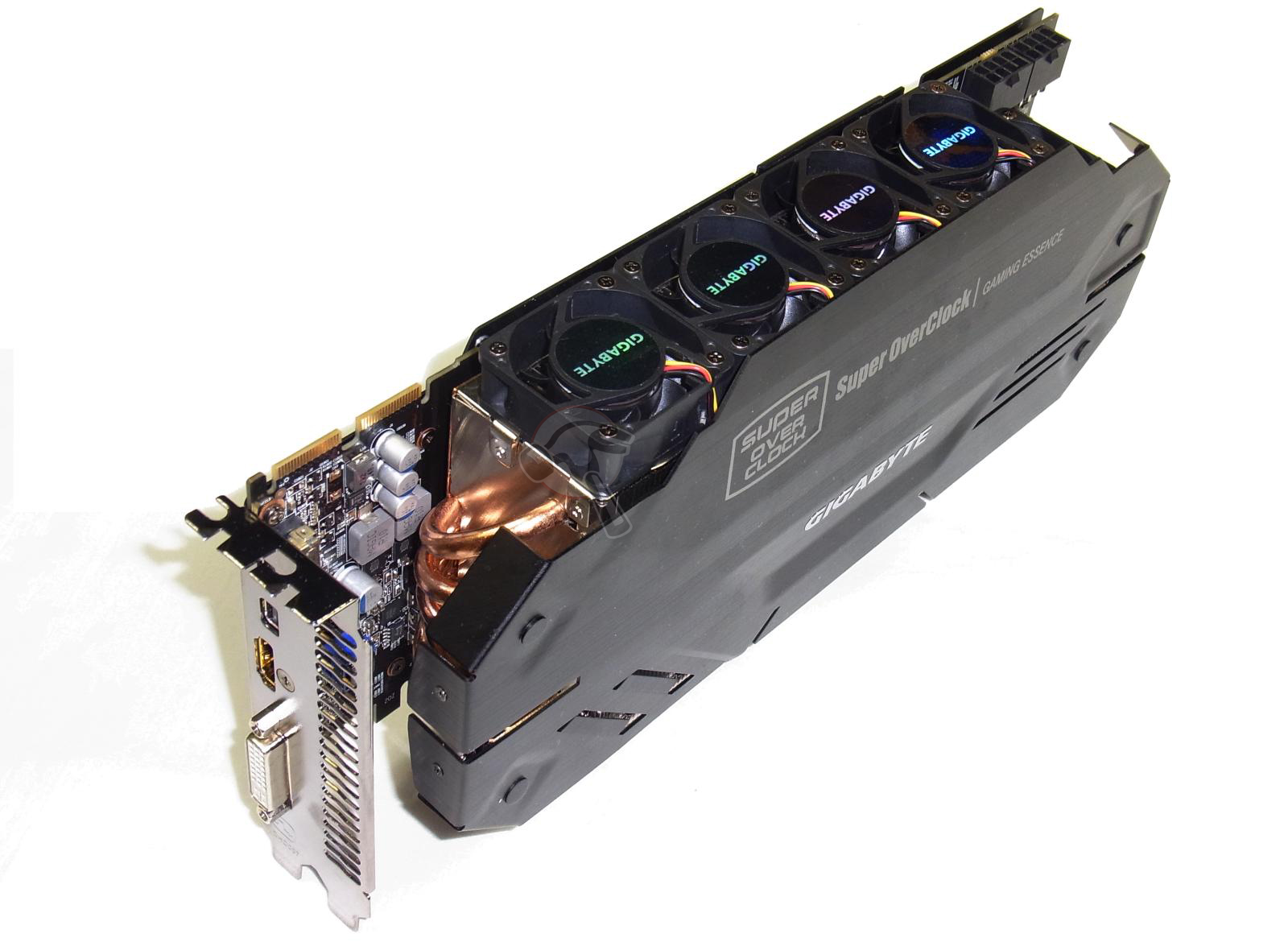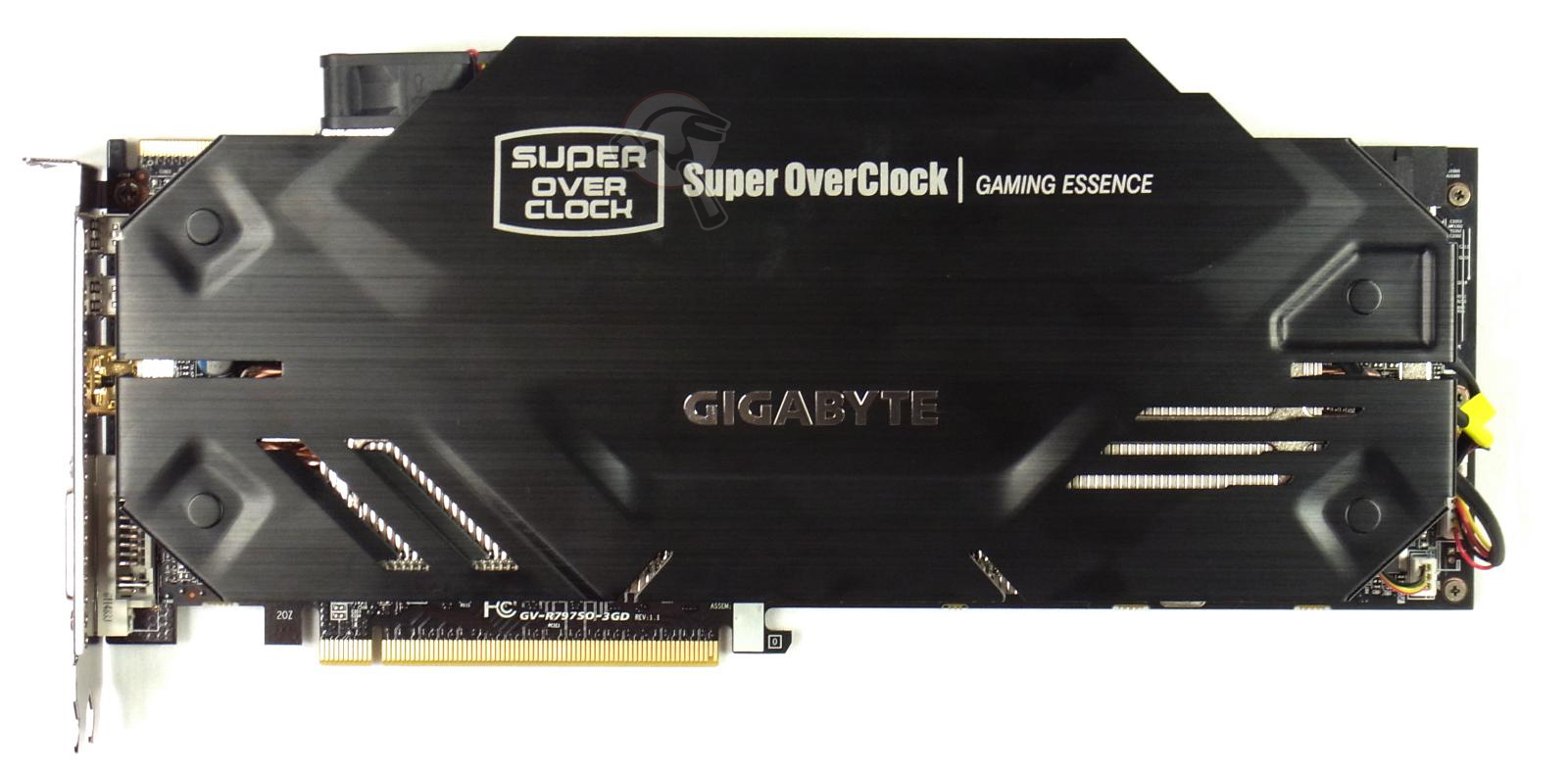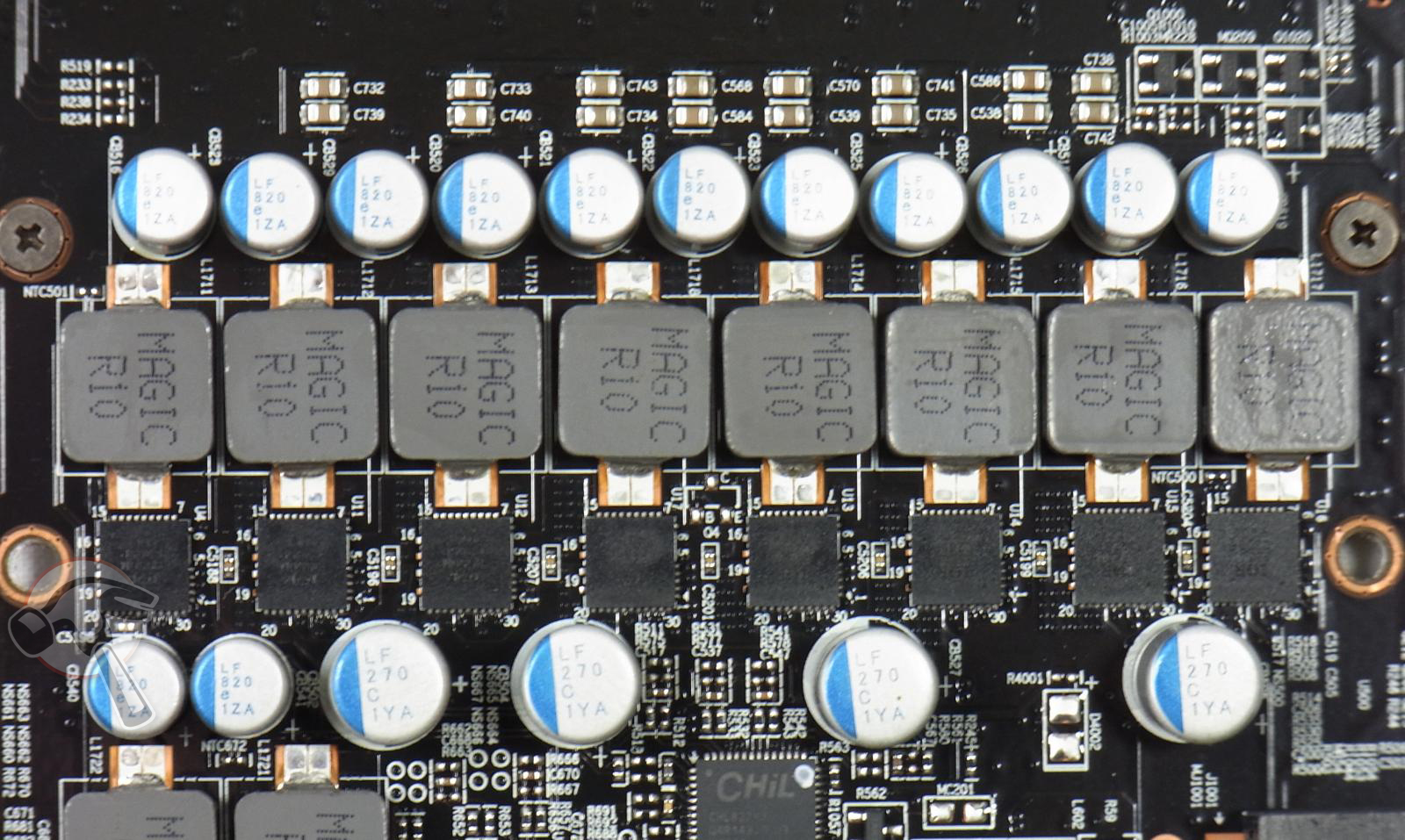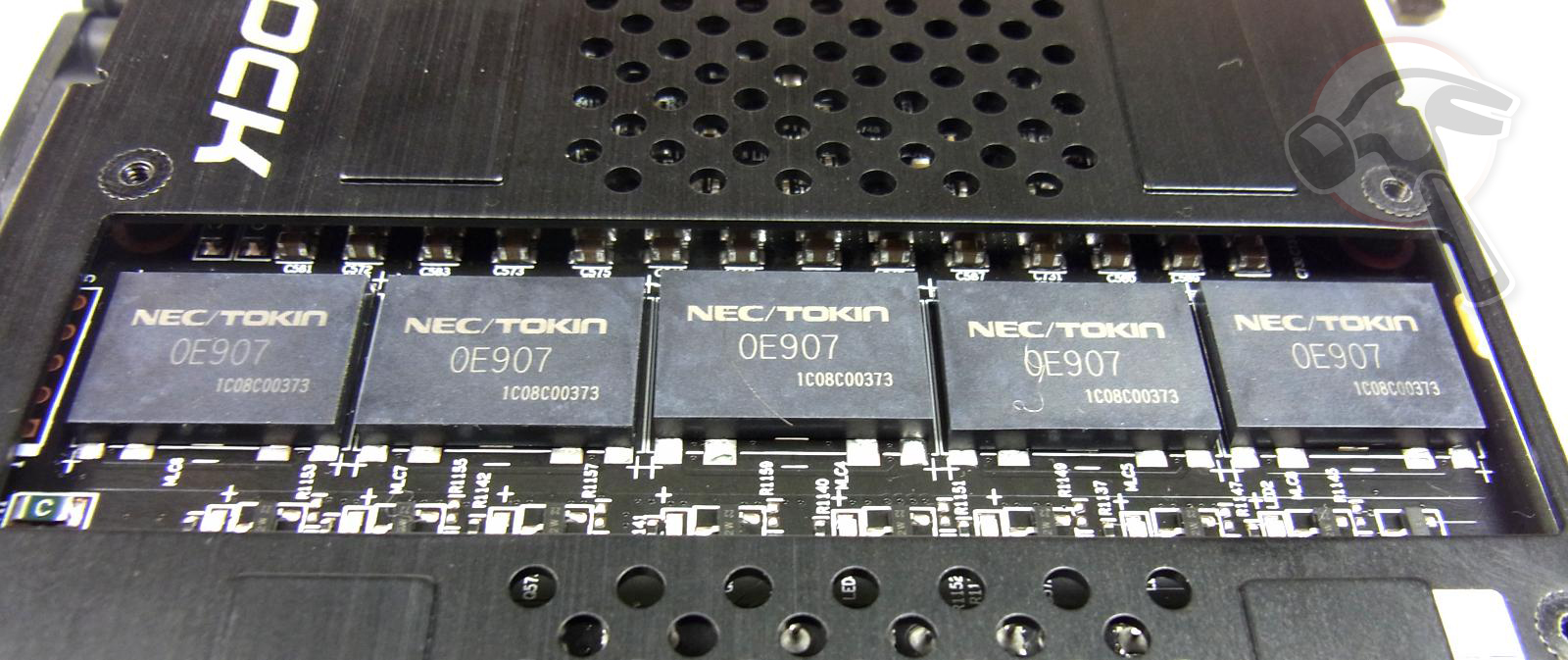Gigabyte Radeon HD 7970 Super Overclock: Now With Windforce 5X
Gigabyte’s Radeon HD 7970 Super Overclock is huge, heavy, overclocked, and very different-looking. Its Windforce 5X cooler employs five 40 mm fans. We benchmark the card, spend some time tweaking it, and measure the noise those blowers make.
Under The Radeon HD 7970 Super Overclock's Hood
This model is not based on AMD's Radeon HD 7970 GHz Edition design, and we think that’s a good thing. A massive cooler invites us to see just how far we can overclock Gigabyte's board, and we haven't had good experiences with tweaking the GHz Edition card due to its PowerTune with Boost feature.
Gigabyte is actually fairly conservative with its factory-set 1080 MHz GPU frequency. Even AMD's reference design can hit that without much of an issue. Of course, we'll see how much further than that we can actually go.
Three gigabytes of GDDR5 memory operate at 1375 MHz, matching AMD’s reference design. This is a disappointingly low number, particularly since Gigabyte’s marketing materials originally claimed 1550 MHz. The modules themselves come from Hynix, and we did manage to push them beyond 1500 MHz on our own.

The Radeon HD 7970 Super Overclock features one dual-link DVI, one HDMI, and two mini-DisplayPort outputs. It's other specs are as follows:
| Header Cell - Column 0 | Gigabyte 7970 Super Overclock | AMD Radeon HD 7970 GHz Edition | AMD Radeon HD 7970 | Nvidia GeForce GTX 680 |
|---|---|---|---|---|
| Stream Processors | 2048 | 2048 | 2048 | 1536 |
| Texture Units | 128 | 128 | 128 | 128 |
| Full Color ROPs | 32 | 32 | 32 | 32 |
| GPU Clock | 1080 MHz | 1000 MHz Base1050 MHz Boost | 925 MHz | 1006 MHz Base1058 MHz Boost |
| Texture Fill Rate | 138.2 Gtex/s | 134.4 Gtex/s | 118.4 Gtex/s | 128.8 Gtex/s |
| Memory Clock | 1375 MHz | 1500 MHz | 1375 MHz | 1502 MHz |
| Memory Bus | 384-bit | 384-bit | 384-bit | 256-bit |
| Memory Bandwidth | 264 GB/s | 288 GB/s | 264 GB/s | 192.3 GB/s |
| Graphics RAM | 3 GB GDDR5 | 3 GB GDDR5 | 3 GB GDDR5 | 2 GB GDDR5 |
| Die Size | 365 mm² | 365 mm² | 365 mm² | 294 mm² |
| Transistors (Billion) | 4.31 | 4.31 | 4.31 | 3.54 |
| Process Technology | 28 nm | 28 nm | 28 nm | 28 nm |
| Power Connectors | 2 x 8-pin | 1 x 8-pin, 1 x 6-pin | 1 x 8-pin, 1 x 6-pin | 2 x 6-pin |
| Maximum Power (TDP) | 300 W | 275 W | 250 W | 195 W |

Although it looks impressive, Gigabyte's front shroud is purely cosmetic. The cooler is closed off and attached to the card’s PCB with six screws.
PCB Comparison

In the image above, Gigabyte's Radeon HD 7970 Super Overclock is up top and AMD's reference Radeon HD 7970 is below. It's easy to see the differences between them. In addition to a larger PCB, Gigabyte's card has a bigger VRM with higher-quality components.
Stay On the Cutting Edge: Get the Tom's Hardware Newsletter
Get Tom's Hardware's best news and in-depth reviews, straight to your inbox.

The inductor coils and voltage transformers consist of encapsulated ferrite coils and low-RDS(on) MOSFETs, putting them in an entirely different league as AMD's own design. This should become an advantage in overclocking.

On the back of the Radeon HD 7970 Super Overclock we find five proadlizers (high-capacity tantalum polymer capacitors). The power circuitry explains why the card is as long as it is.

The back plate’s only function is to stabilize Gigabyte's 7970 so that it doesn’t bend under the heavy cooler's weight. As far as quality goes, the on-board components leave nothing to be desired.
Current page: Under The Radeon HD 7970 Super Overclock's Hood
Prev Page Meet Gigabyte's Radeon HD 7970 Super Overclock Next Page Gigabyte's Cooling Solution, Up Close-
unksol While the cooler is an interesting concept, and the cards components are solid build quality and attention to detail seem to be severely lacking. The cooler isn't even designed for this board. Loose screws? thermal pads and TIM you have to scrape off/replace and void your warranty? And on a review sample of all things. I can't imagine one off the line would improve that situation...Reply
And while good on Toms for reporting it why isnt the card tested as it comes from the factory so we know what to actually expect... -
I will surely like to have that Gigabyte HD 7970 Super Overclock graphics card and be the only one in the US to claim so.Reply
-
amuffin The Gigabyte SOC Cards were always on of the most intriguing series out there of GPU's!Reply -
jase240 I like the idea of this card, but really that thing is LOUD. I have an Asus GTX 670 Direct CUII TOP and its silent even at load its barely audible. Personally I think if someone is going to overclock to the extent that they need a card that keeps the ambient temps to be low, they will probably be liquid cooling their CPU with a radiator at the top of their case(that's what I'm doing).Reply
Honestly though if this card could be a little quieter it would be a great standard considering most people do still overclock with air coolers, and one thing bad for air coolers is a hot GPU blowing air towards the CPU. -
goodguy713 To be honest i think its a pretty sexy card.. loud yea.. but still a sweet card.. ill keep my fingers crossed..Reply -
gsxrme Water cooling is truly the only option for really overclocking. Those fans are way to noisy. I wish toms had a 1300Mhz GTX680 listed because my factory ASUS reference board even hits 1300Mhz Core / 6750Mhz Ram with no mods or voltage tweaks. I don't see this as a breakthrough and with the cost of 2500 res monitors less than 1% of the market are running that high.Reply -
nforce4max This card isn't meant for the chickens that want cards to mostly silent but is for those who are much more aggressive in overclocking while being more forgiving when it comes to noise. This card isn't that loud compared to some rack mounted servers, I think that you guys could have pushed it further (why not) despite the power consumption. I like the build quality despite the R10 rated inductors that are driving the memory and gpu Q_Q As for the cooler I wonder if the heat pips only make contact with the vapor chamber or actually part of it? It isn't hard to design a good cooler but will cost more to produce.Reply
A lot of noise is a lot cheaper than going liquid cooling and as hot as it gets where I live you Need a really good cooling solution.